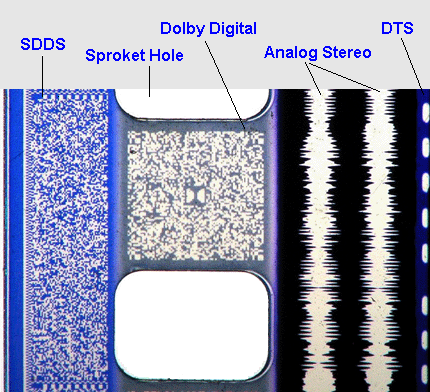Quote:
Originally Posted by pagemaster

Yes, there are trailer discs for dts only, however most features contain the DTS information on the actual feature discs and movie prints always have "attached" trailers on the print.
|
I never had to use the CD-ROMs.
Not
all trailers come attached. (
Somehow You forgot about updating the trailers every thursday night...) The equipment I used often times wasn't able to find the corresponding track on the disc.
Quote:
Dolby SRD (Dolby Digital) for cinemas places the information for Dolby Digital between the sprocket holes on the soundtracks side of the print. Timecode for DTS is next to Dolby SR optical and SDDS is located on the edge of both sides of the film print.
Dolby SRD in the movie theatres is more compressed than DTS.
|
Not when playing a "5 line dolby track"!!! I guarantee 5 line dolby sounds better than compressed dolby. Technically 5 line dolby digital isn't even
dolby digital, It's five track analog with the sub matrixed out.
Quad soundtrack prints are a whole new ballgame. I'm betting it costs
sooo much more to process a quadtrack print. The going rate for dual track prints was 300,000 USD, that's just what the distributors charged the theater if they destroyed a print.
I however have only worked with duel track prints (which contain only DTS and DOLBY) If the DTS were to ever cut out then the stereo from the dolby side would be read.
Come to think of It, there is only one auditorium in my city with a Sony setup. Quadtrack prints haven't even been around for 30 years, whatever dude... Most places are set up for duel. Quad and duel setups wouldn't be interchangeable because you'd have the sound projected onto the screen, the lenses aren't compatible.
(You know what you need to say to end this debate, so just go ahead and say it)





















 Linear Mode
Linear Mode

